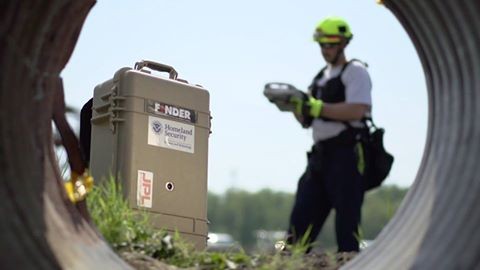A radar device called FINDER located and saved four Nepal earthquake survivors after the natural disaster hit last month. The machine, partly developed by NASA, uses microwave radar technology to detect human heartbeats under 30 ft. (9.1 m) of rubble.
The powerful 7.8-magnitude 2015 Nepal earthquake officially resulted in over 7,700 deaths and over 11,200 injuries. It struck in the country's capital, Kathmandu and the surrounding valley.
FINDER'S Nepal earthquake search for survivors was conducted in Chautara. The village is slightly east of Kathmandu.
The radar technology device is able to detect minute, millimeter-wide movements of the human heart as it pumps blood. FINDER helped in the successful Nepal earthquake rescue of four Nepali men who had been trapped under bits of bricks and stones for days.
The four men included two pairs of men who were trapped in two different buildings. They were all buried in a maximum of 10 ft (3 m) of rubble.
Reginald Brothers, undersecretary for the U.S. Dept. of Homeland Security (DHS), says that technology's genuine test is how well it operates in a "real-life" setting. Tools such as FINDER can assist when the "worst nightmares" happen, such as the hunt for signs of Nepal earthquake survival.
The prototype device is the size of a carry-on suitcase. While multiple versions exist, the one used in the Nepal earthquake disaster weighed less than 20 lbs. (9.1 kg), according to Buzz Feed.
NASA's Jet Propulsion Laboratory (JPL) teamed up with DHS to design and build FINDER. The device's radar zaps out signals and then reads them when they reflect back from the rubble.
A few years ago NASA and DHS introduced a portable radar unit that uses FINDER's technology. However, the NASA tech was used then to monitor spaceships, according to Gizmodo.
Government officials demonstrated FINDER's technology Thursday to an enterprise that will launch FINDER's commercial manufacture. More compact versions than the one used during the Nepal earthquake aftermath are planned.



























